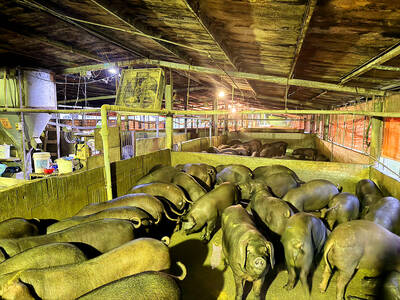Welcome to Sunday Science! Every Sunday during the summer, we’re going to guide you through some cool experiments that you can do at home. It’s a good idea for you to keep a record of what you do in a Science Journal. That way you can record what you learn, compare results and maybe use them to design new experiments! Have a look at the Science Journal box for some ideas to get you started. Remember to always ask a grown-up’s permission before trying out an experiment.
歡迎閱讀《週日科學版》!在暑假期間,我們每週日都要為你介紹可以在家中進行的有趣科學實驗。你可以在《科學日誌》中記錄自己做了哪些活動,這樣就可以將所學的紀錄下來,比較這些結果,也許還可以利用它們來設計新的實驗!先看一下《科學日誌》的點子再開始吧。展開實驗之前,記得要獲得大人許可喔!
Making a volcano 動手作火山
What you will need:
An empty water bottle
Bicarbonate of soda (baking soda)
Vinegar
Dish soap
Food coloring (red)
A tray (to put everything on)
A cup or pouring jug
A spoon
A funnel (if you don’t have one at home, you can make one from cardboard covered with tinfoil or use a pouring jug to add the ingredients)
Some sand or modeling clay (optional)
Glitter (optional)
Old Newspaper
* Place the newspaper over your working surface.
* Put the tray on the newspaper. Put your empty bottle in the middle of the tray and put the funnel in the neck of the bottle.
* Use the spoon to put baking soda in the bottle. Put in enough to cover the bottom of the bottle well. If you are using glitter add this too.
* If you are using sand or modeling clay, shape it around the bottle (to about 3/4 of the way up) to make it look like a volcano or mountain.
* In the cup or jug combine 1/4 cup of vinegar, two big drops of dish soap and a couple of drops of food coloring (be careful food coloring can stain clothes).
* Pour the mixture into the bottle and watch what happens!
Don’t forget to record what happens in your Science Journal.
所需材料︰
一只空水瓶
小蘇打粉
醋
洗碗精
紅色食用色素
一只托盤(大小需足以放置所有東西)
一只杯子(或是有傾倒口的量杯)
一個湯匙
一只漏斗(假如家裡沒有漏斗,你可以用鋁箔包住厚紙板來自己做一個,或是用量杯來添加材料)
沙子或塑形用黏土(非必要)
亮片(非必要)
舊報紙
* 在工作檯面鋪一張舊報紙。
* 把托盤放在報紙上。將一只空瓶子放在托盤中央,並把漏斗架在瓶子上。
* 用湯匙將小蘇打粉加入瓶內,數量要足以覆蓋整個瓶底。假如你有亮片,也可以在這時加進來。
* 假如你有沙子或黏土,將它們包住瓶子四周(約瓶高的四分之三),讓瓶子看起來宛如火山或高山。
* 在杯子或量杯中放入四分之一杯的醋、兩大滴洗碗精,與幾滴紅色色素(小心別讓色素弄髒衣服)。
* 把這些東西倒入瓶內,看看會發生什麼事!
別忘了將實驗結果紀錄在《科學日誌》喔。
(翻譯︰賴美君)

For many people in Taiwan, childhood memories of rural life include pig pens standing beside family homes. Leftover rice, vegetable scraps and soup from daily meals were poured into buckets and fed to pigs. This practice of feeding pigs with household food waste was once a common way of life, both an economic choice and an expression of agricultural society’s deep respect for conserving resources. From a practical standpoint, pigs are omnivorous animals capable of efficiently digesting food scraps that humans can no longer eat. For rural households, food waste cost almost nothing, yet it could be converted into pork, a

A: Apart from the Taipei Music Center’s exhibit and concert, US pop rock band OneRepublic and rapper Doja Cat are touring Kaohsiung this weekend. B: OneRepublic is so popular that after tonight’s show at the K-Arena, they are set to return to Taiwan again in March next year. A: And Doja will also perform at the same venue on Sunday, right? B: Yup. Her collab with Blackpink’s Lisa and singer Raye for the song “Born Again” has been a huge worldwide success. A: Doja even made it on Time magazine’s “100 Most Influential People” list in 2023. She’s so cool. A: 本週末除了北流的特展和演唱會外,美國男團共和世代和饒舌歌手蜜桃貓朵佳也將來台開唱。 B: 共和世代因太受歡迎,繼今晚高雄巨蛋的演唱會後,預計明年3月即將再度來台巡演唷。 A: 朵佳本週日將在同場地開唱,對不對?

Tango unfolds in a dimly lit room, where a haunting melody ushers two dancers into a close embrace. Here, music and movement merge into a silent yet passionate conversation, expressing longing, memory and shared purpose. What makes tango truly magical is the deep interaction and spontaneous improvisation between partners. Tango began in the late 19th century in Buenos Aires, Argentina’s bustling capital. Born in the poor working-class neighborhoods and busy port areas, this dance emerged from a melting pot of cultures. European immigrants, African slaves and local residents all contributed to its unique character. From these rich influences, tango

A: What show are you watching online? B: I’m watching “Fly Me to the Moon & Back” – an exhibition launched by the Taipei Music Center (TMC) to commemorate the late singer Tom Chang. A: Known for his sky-high notes, Chang is praised as one of the best singers in the 1990s. His death at the age of 31 was a major loss indeed. B: And I’m so glad that we went to the TMC’s 90s-themed concert last Friday. I finally saw the iconic “Godmother of Rock” WaWa perform live. A: This year-end show also featured singers Princess Ai, Bii, Wayne Huang, PoLin and